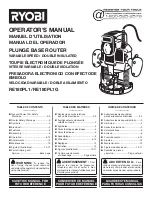
69
{
If the interface that received the packet is the RPF interface, the RPF check succeeds, and the
router forwards the packet to all the outgoing interfaces.
{
If the interface that received the packet is not the RPF interface, the RPF check fails, and the
router discards the packet.
2.
If the corresponding (S, G) entry exists, and the interface that received the packet is the incoming
interface, the router forwards the packet to all the outgoing interfaces.
3.
If the corresponding (S, G) entry exists, but the interface that received the packet is not the
incoming interface in the multicast forwarding table, the multicast packet undergoes an RPF check.
{
If the RPF interface is the incoming interface of the (S, G) entry, it indicates that the (S, G) entry
is correct but the packet arrived from a wrong path. The packet will be discarded.
{
If the RPF interface is not the incoming interface, it indicates that the (S, G) entry has expired,
and the router replaces the incoming interface with the RPF interface. If the interface on which
the packet arrived is the RPF interface, the router forwards the packet to all the outgoing
interfaces. Otherwise, it discards the packet.
Assume that unicast routes are available in the network, MBGP is not configured, and no multicast static
routes have been configured on Router C, as shown in
. Multicast packets travel along the SPT
from the multicast source to the receivers. The multicast forwarding table on Router C contains the (S, G)
entry, with VLAN-interface 20 as the incoming interface.
Figure 24
RPF check process
•
When a multicast packet arrives on interface VLAN-interface 20 of Router C, because the interface
is the incoming interface of the (S, G) entry, the router forwards the packet to all outgoing
interfaces.
•
When a multicast packet arrives on interface VLAN-interface 10 of Router C, because the interface
is not the incoming interface of the (S, G) entry, the router performs an RPF check on the packet.
The router searches its unicast routing table and finds that the outgoing interface to Source—the RPF
interface—is VLAN-interface 20. It indicates the (S, G) entry is correct, and the packet arrived
along a wrong path. The RPF check fails, and the packet is discarded.
Multicast static routes
A multicast static route is an important basis for RPF check. Depending on the application environment,
configuring a multicast static route helps change an RFP route and create an RPF route.
Summary of Contents for A5500 EI Switch Series
Page 12: ...xii Conventions 425 Index 427 ...
















































